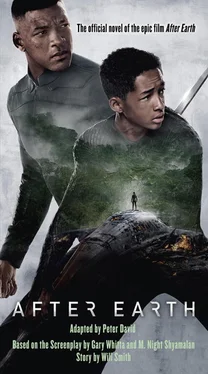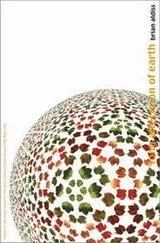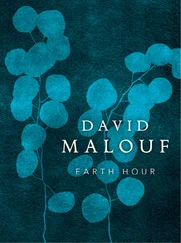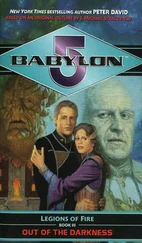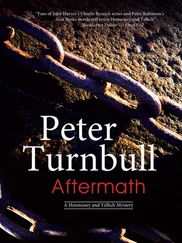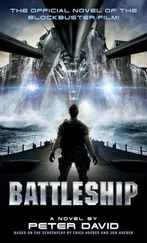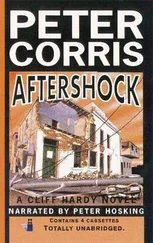Doctor Nizamani says, “The squad has been together for more than a year. You’re the newcomer. Give it time.”
But as time goes on, Jon doesn’t interact any more with his fellow Rangers. If anything, he interacts with them even less. So little, in fact, that he doesn’t think it would be troubling to him if they had died in the Ursa attack.
Maybe he would have grieved for them before his operation. But not now.
Questions come to mind with increasing frequency, questions Jon finds difficult to answer. One is why he should kill Ursa.
They present a threat to humanity, true. But he’s no longer human as far as he can tell, so why act on humanity’s behalf? What makes the Ursa any less worthy of survival than the colonists they hunt?
Jon has no answer.
Days after Jon’s first mission, he and his squad are dispatched to a power station on the North Side of the city where an Ursa has attacked the workers.
From all indications, the Ursa is still inside. So are the workers, who got off a single truncated distress call, though it’s not clear if they’re still alive.
The power station is a massive orange-colored mound designed to blend in with the red earth of the desert. Even before Jon disembarks from the Ranger transport that has brought him to the scene, he sees the ragged hole in the exterior wall where the Ursa crashed through it.
He starts for it even as his squad hops off the transport behind him. There’s really no reason for him to wait for them. At this point, they’re just a burden to him.
Jon picks his way through the rubble created by the Ursa’s entry. Inside the power station it’s cool and quiet except for a low hum. If there’s an Ursa present, it’s not making a ruckus.
That suggests two possibilities. One is that the creature already has caught its prey. The other is that it’s detected the approach of Jon’s squad and camouflaged itself in order to stalk it.
Jon taps his cutlass and watches its metal fibers form the pike configuration. His favorite. The one he consistently finds most useful.
He recalls the layout of the station, which he studied on the way over. The facility has two main access corridors that run perpendicular to each other, crossing in the middle, where the power chamber is situated.
There are doors along the corridors. The workers may be hiding behind them , he thinks. Or their remains may be lying somewhere . He doesn’t see any evidence of bloodshed in the corridor. But that doesn’t mean anything. It’s a big place .
He approaches the power chamber, senses alert, cutlass at the ready. The chamber, which is made of a blue-gray ceramic material, houses an apparatus that uses magnetic fields to generate energy-rich plasma, which then is pumped into a complex web of underground conduits.
The chamber has a small window on each corridor. Jon isn’t focused on it, and so it’s a surprise when he notices movement through the window.
One of the workers, he thinks. A male . He’s still too far away to tell if the worker’s injured.
At the same time, the worker seems to see Jon. He beckons to someone inside the chamber, someone Jon can’t see. A moment later, two other workers crowd the window.
A scenario begins to unfold in Jon’s mind as he advances. The workers took shelter in the chamber. It kept them safe. But they can’t leave for fear of the creature .
Jon holds his hands out, the empty one palm up. He’s learned that this gesture poses a question. In this case, the question is: Where’s the Ursa?
The workers return the gesture, signifying that they don’t know. Yet they have line-of-sight access to all parts of the station. So the creature has camouflaged itself. This is valuable information.
They’re now on even footing, Jon and the Ursa. Neither can be seen by the other.
Unfortunately, the creature won’t reveal itself until it’s about to pounce. With the workers constrained to remain in the power chamber, they won’t become prey. That leaves only one other possibility.
Jon turns to his squad mates, who are coming up behind him. He points to the one nearest to him, Tseng, and says: “You and I will scout ahead. The rest of you remain here.”
Jon doesn’t know if Tseng understands what he has in mind. Either way, she doesn’t hesitate. She moves down the hallway with him, her cutlass a pike like his.
The Ursa could be anywhere. They watch carefully for a sign of it. However, they reach the power chamber without getting such a sign.
The chamber is encircled by a strip of open floor about fifteen feet wide. It’s enough space to hold an Ursa who could be monitoring its prey, smelling their fear through the air vents in the chamber.
Waiting for them to emerge.
It no longer has to do so , Jon reflects. If it’s here, or anywhere in this vicinity, I’ve given it another option .
He’s barely completed the thought when a huge form seems to materialize out of thin air. It’s a blur of pale hide and smart metal blue, and it strikes Tseng before either she or Jon can make a move.
Tseng goes flying backward and skids across the floor. She finally stops thirty feet away.
She’s already dead, her chest caved in by the impact, by the time the Ursa lumbers after her. But she’s served her purpose. She’s brought the beast out of hiding.
Jon’s squad mates go after it. They weave a web of silver with their cutlasses. But there’s not much room for them to operate in the corridor, not nearly enough for them to surround the Ursa as they’ve been trained to do.
Jon watches as the creature swipes at Saturria and tears his arm off. The others come forward to cover him while Jakande applies a tourniquet.
Jon looks at the cutlass in his hand. He might be able to kill the Ursa with it. But he feels no desire to do so.
His fellow Rangers are in mortal danger, but that fact doesn’t faze him in the least. He isn’t human anymore. The Primus was right about that—he sees that now. He has as much in common with Tseng or Saturria or Jakande as he does with his cutlass. In other words, nothing .
Then he realizes that someone’s standing behind him. Turning, he sees that it’s Doctor Gold. She’s wearing the same white lab coat that she wore at the medical center, a lock of her hair tucked behind her ear, her eyes the same pale green.
The other doctors insisted that she wasn’t real, that she was a figment of his imagination. But she looks real, as real as any of the Rangers who followed him there.
“Doctor Gold,” he says. “What are you—?”
“Jon,” she replies, her voice tight and urgent yet just as musical as he remembers, “you’ve got to help these people. You’ve got to kill the Ursa.”
“Why?” he asks.
Her brow puckers. “Because I’m asking you to.”
It isn’t much of a reason. But because it’s Doctor Gold who’s asking, Jon accepts it.
The Ursa is completely unaware of him. He capitalizes on that fact, taking a run at it and eyeing the one vulnerable spot on the creature’s back.
He misses it on purpose.
But he comes close enough to make the creature shriek with pain and rage—to hobble it, slow it down, and force it to address the invisible threat behind it rather than the visible prey before it.
It jerks him off its back, sending him crashing into the wall. Something snaps in his side, but he manages to scramble to his feet.
“Get out!” he yells despite the pressure in his side. “And take the workers with you!” He turns and gestures for the workers in the power chamber to leave it and run.
They do as he asks, falling over one another to get out of the chamber and down the corridor. But the Rangers hesitate. They have their duty, after all.
Читать дальше
